“The richness I achieve comes from Nature, the source of my inspiration.” – Claude Monet
Nature has served as humanity’s most enduring muse, offering an inexhaustible wellspring of beauty, wonder, and creative possibility that continues to captivate artists across cultures and centuries. From the delicate brushstrokes of Monet’s water lilies to the ephemeral installations of contemporary environmental artists, the natural world provides both the materials and the emotional resonance that transforms artistic vision into meaningful expression.
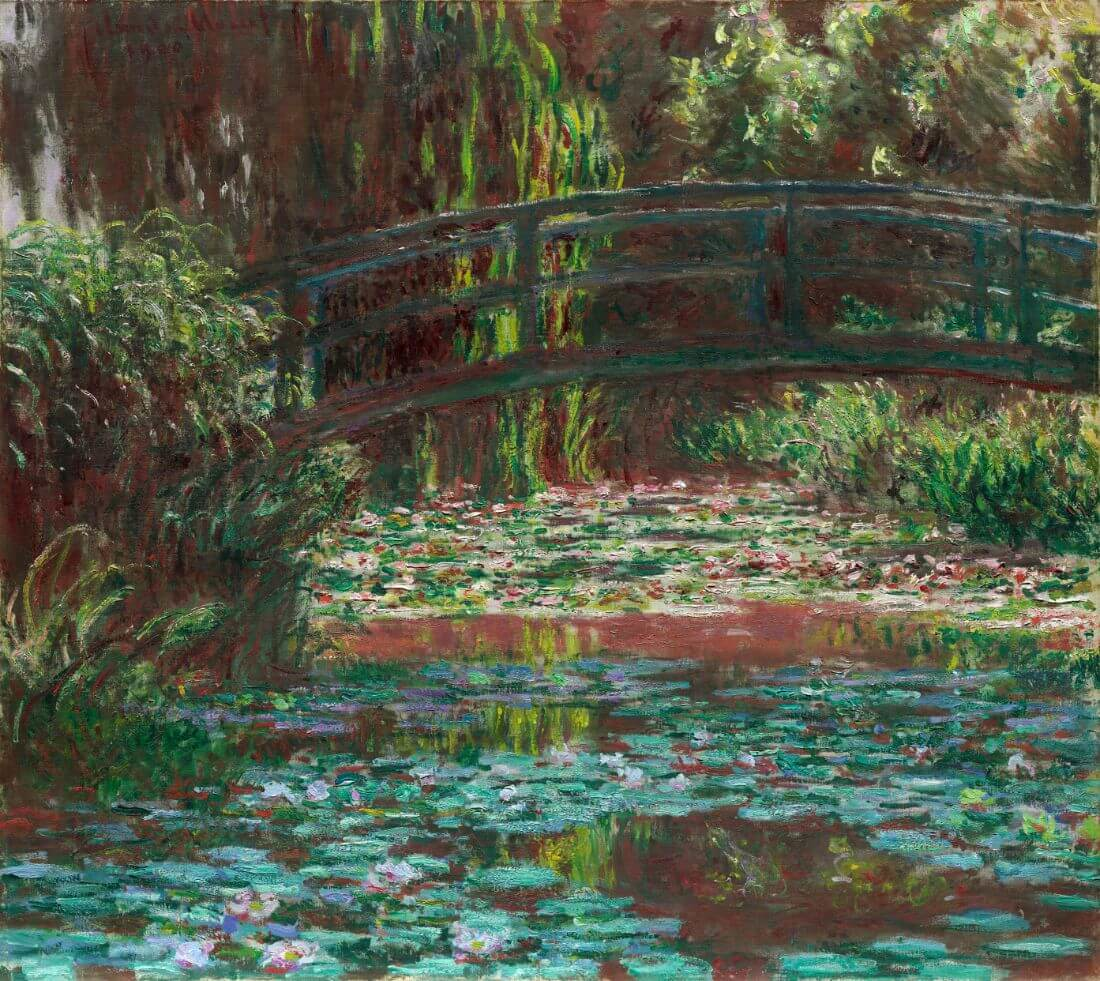
“Water Lily Pond” by Claude Monet, showcasing his nature-inspired Impressionist style with a lush garden and reflective water lilies
The Timeless Bond Between Art and Nature
Throughout art history, the relationship between creativity and the natural environment has evolved from simple representation to profound philosophical dialogue. The Hudson River School painters of the 19th century, including Thomas Cole and Albert Bierstadt, elevated American landscape painting by capturing the sublime grandeur of untouched wilderness. Their meticulous attention to geological formations, atmospheric effects, and pristine valleys reflected a nation’s growing awareness of its natural heritage and the spiritual power inherent in wild places.
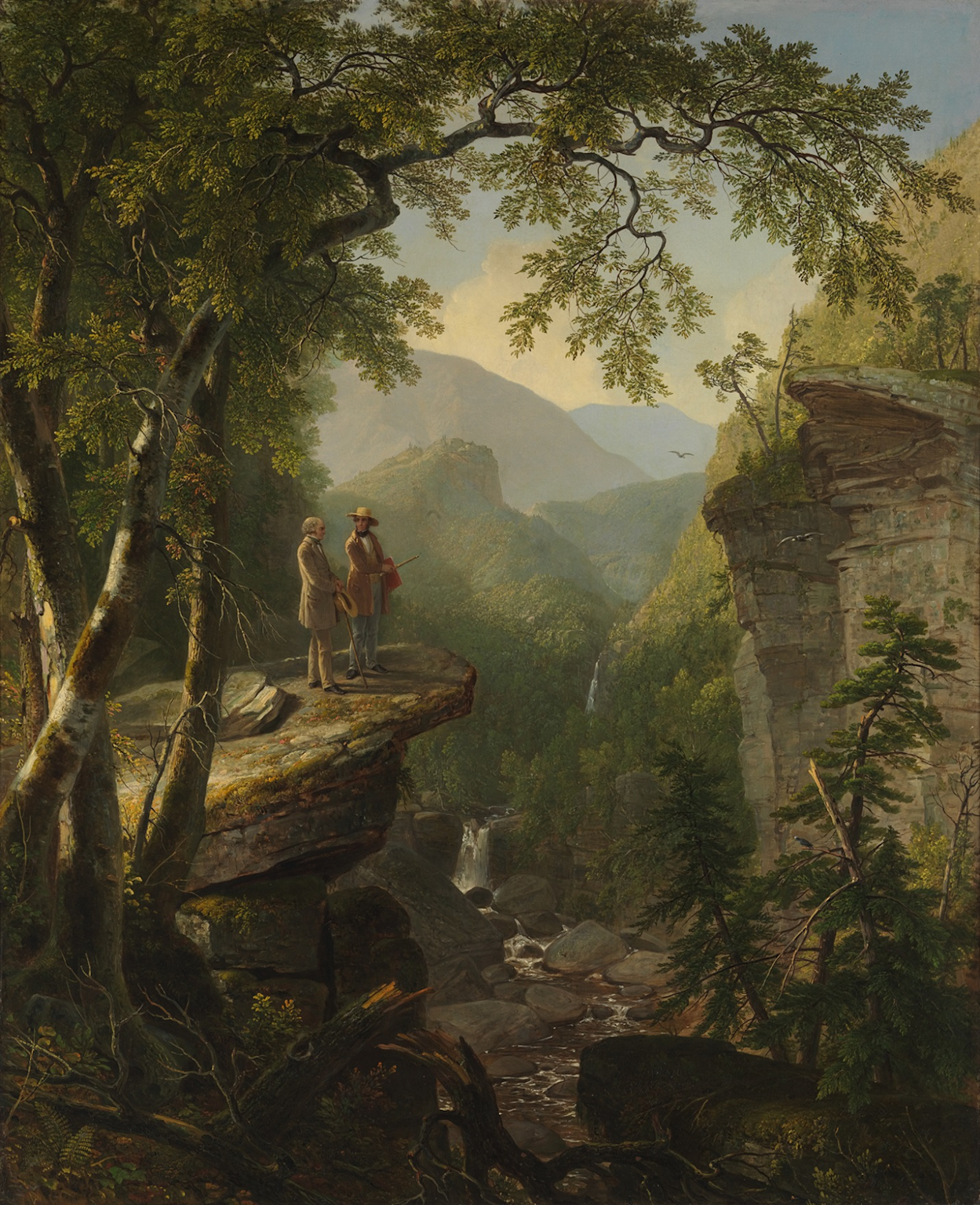
Hudson River School landscape painting showcasing the grandeur of nature as a profound source of artistic inspiration
The Impressionist movement revolutionized this relationship by moving beyond mere documentation to capture nature’s ephemeral qualities—the fleeting effects of light, the changing seasons, and the emotional resonance of outdoor spaces. Monet’s garden at Giverny became both sanctuary and laboratory, where every reflection on water and every shift in light became a source of artistic revelation.
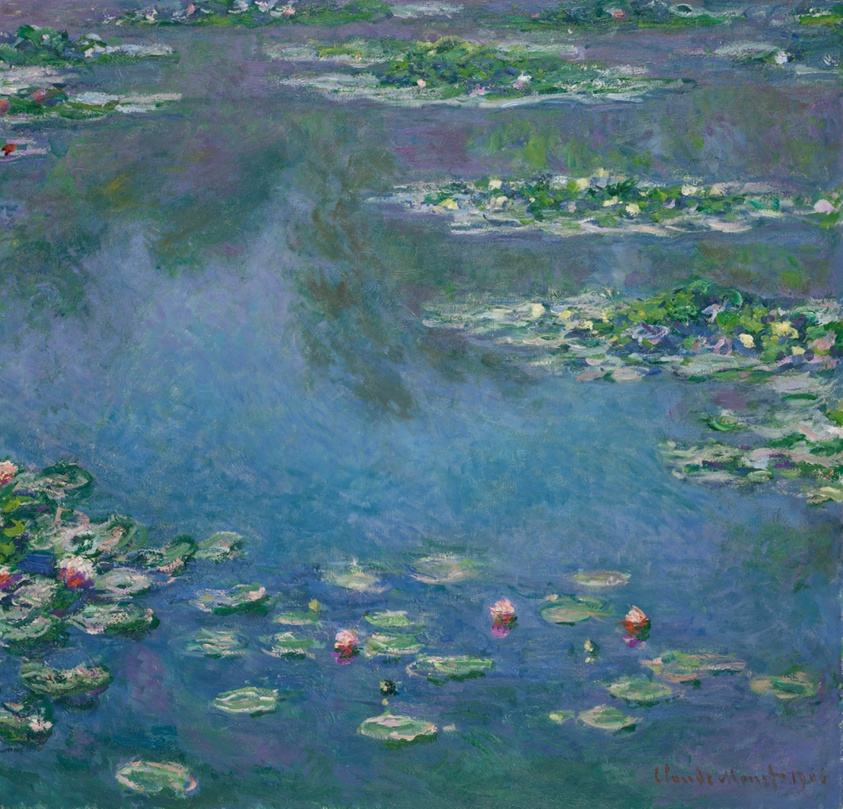
Claude Monet’s Water Lilies painting exemplifies nature-inspired art through its impressionistic depiction of a serene pond with lily pads and flowers
Contemporary Expressions: Environmental Art and Eco-Consciousness
Modern artists have expanded the conversation between art and nature into urgent contemporary territory. Environmental art and Land art movements of the 1960s and 1970s challenged traditional gallery spaces by creating monumental works directly in natural landscapes, using the earth itself as both canvas and material. Artists like Andy Goldsworthy have pioneered a practice of temporary, site-specific installations that celebrate the inherent beauty of natural materials while acknowledging the impermanence that defines all natural processes.
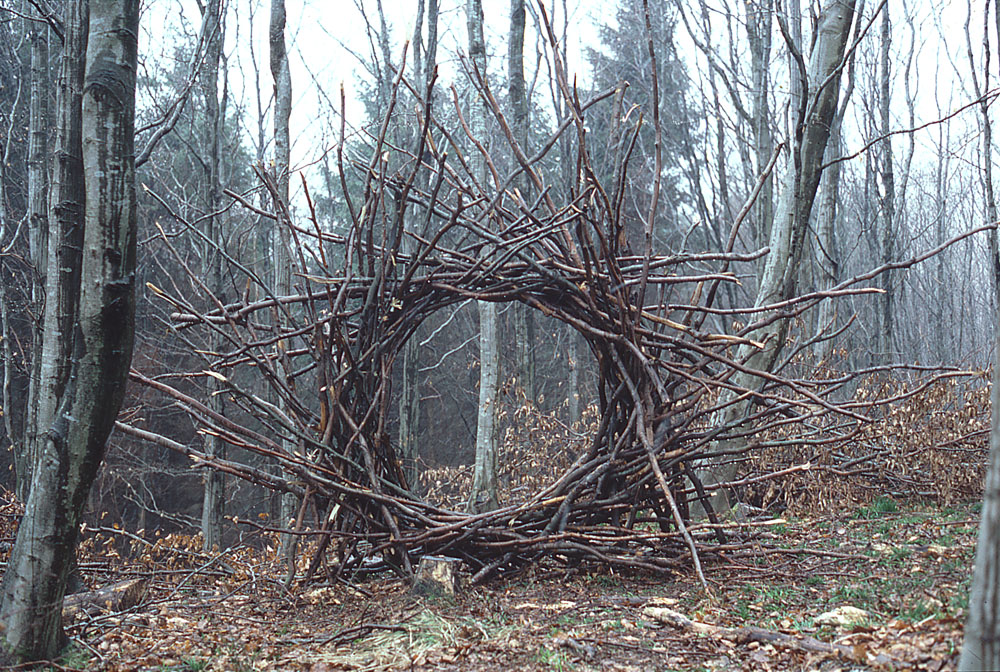
Environmental art installation by Andy Goldsworthy made from intertwined sticks in a forest setting
Goldsworthy’s philosophy embraces what he calls the “implicit decay” of his works, using ice, leaves, stones, and branches to create sculptures that exist only briefly before returning to nature. His approach reflects a deeper understanding of artistic practice as collaboration with natural forces rather than domination over them.
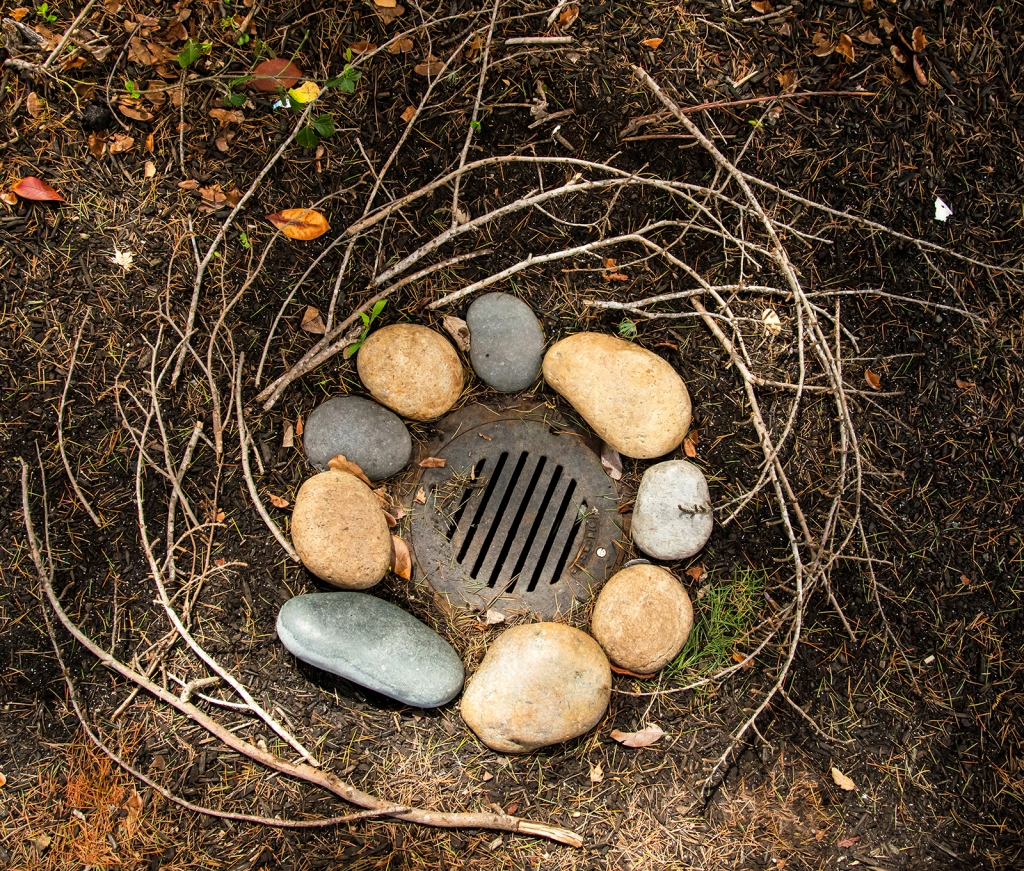
Nature-inspired art installation using stones and twigs arranged around a metal grate on the forest floor.
The Science Behind Nature’s Therapeutic Power
Recent research has validated what artists have long intuited: engagement with nature through creative expression offers profound benefits for human wellbeing. Nature-based art therapy combines the healing power of artistic creation with the restorative effects of natural environments, resulting in measurable improvements in stress reduction, cognitive function, and emotional regulation.
Studies involving nature-based group art therapy programs have demonstrated significant positive changes in brain wave patterns, stress levels, and self-esteem after just eight weeks of practice. Participants show reduced aggression, anxiety, and depression while experiencing enhanced life satisfaction and emotional stability.
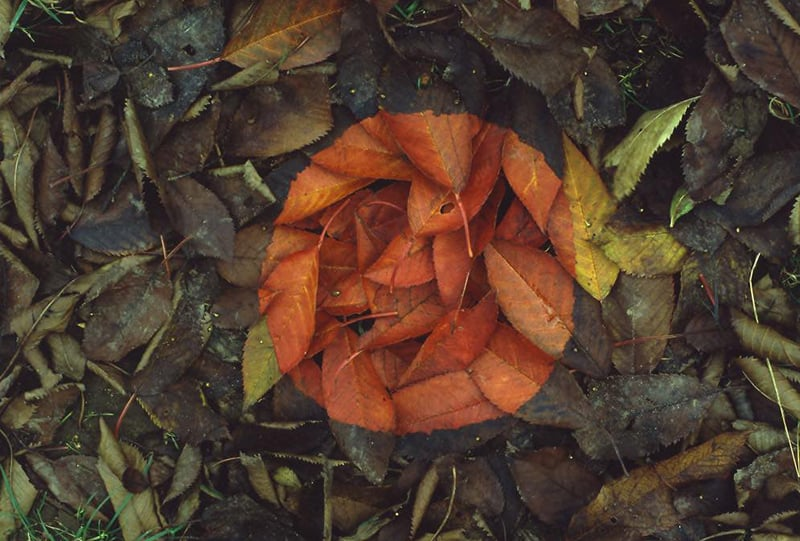
Nature-inspired art using autumn leaves arranged in a circular pattern highlighting natural colors and textures
Biophilic Design: Bringing Nature Indoors
The concept of biophilia—our innate love of life and living things—has evolved into a design philosophy that recognizes the essential role of nature in human psychological and physical health. Biophilic art and design integrate natural elements, patterns, colors, and textures into built environments, creating spaces that support healing, learning, and productivity.
Research in healthcare settings shows that patients recover more quickly when surrounded by nature-inspired artwork and living plants. At the same time, students demonstrate improved learning outcomes in classrooms incorporating biophilic design elements. The measurable benefits—sometimes showing 15-20% improvements in various metrics—underscore the profound impact of maintaining a connection with natural elements even in urban environments.
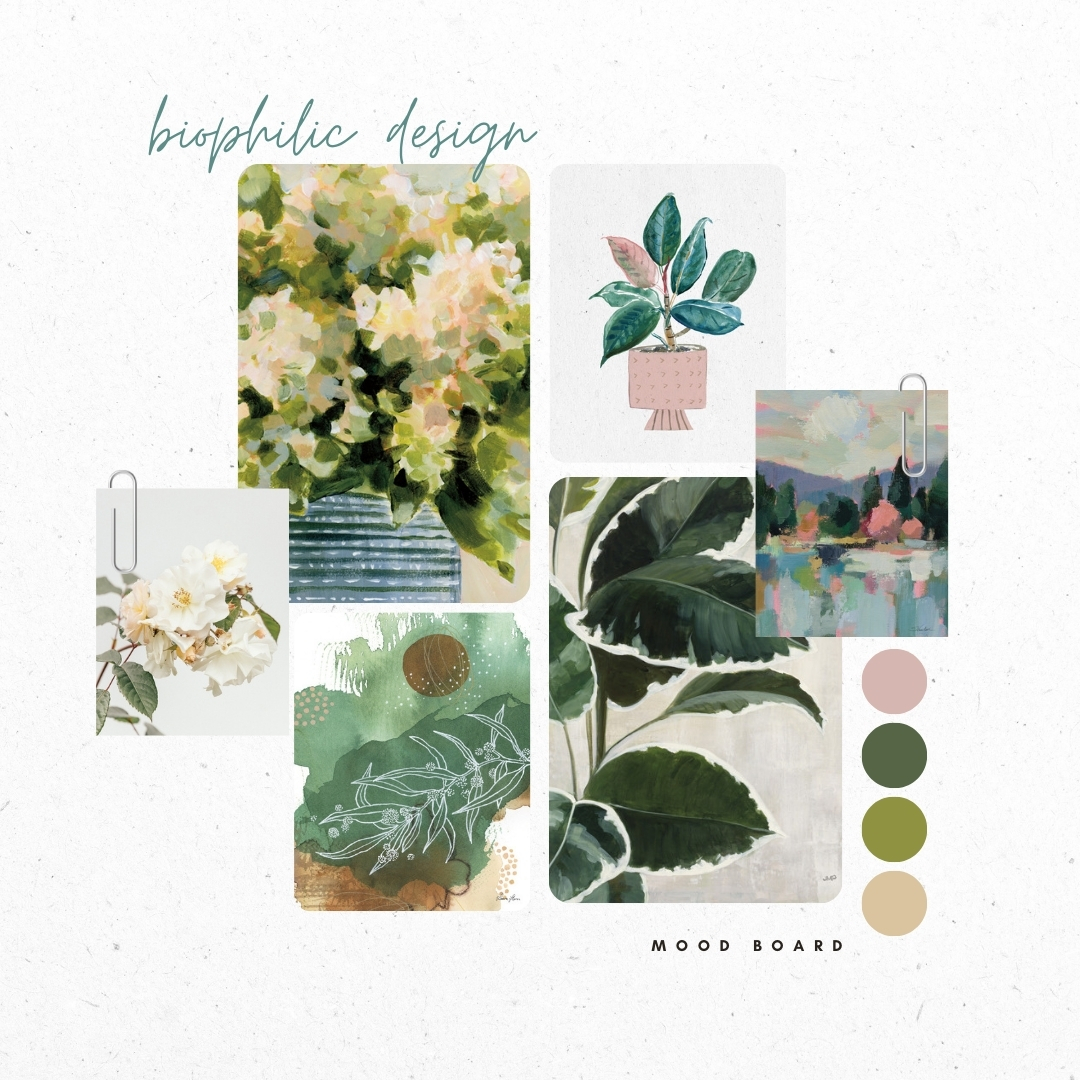
Mood board showcasing nature-inspired biophilic art with plant motifs and a calming natural color palette wildapple
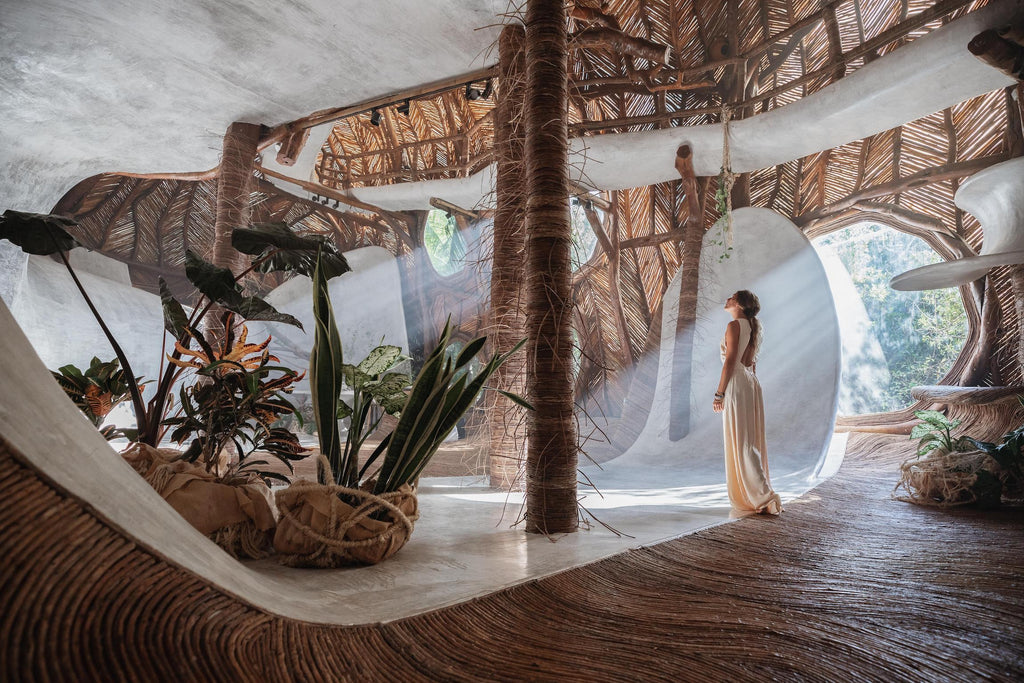
Interior space showcasing biophilic design with natural materials and organic shapes inspired by nature
The Evolution of Natural Materials and Techniques
Contemporary artists working with nature-inspired themes have expanded their material palette to include everything from traditional botanical specimens to recycled ocean plastics and biodegradable pigments. Eco-art practitioners like those transforming discarded flip-flops into marine habitat sculptures demonstrate how environmental consciousness can drive both aesthetic innovation and ecological restoration.
The integration of technology with natural themes has opened new possibilities for immersive experiences. Artists now create interactive installations where plants produce sounds when touched, or use artificial intelligence trained on millions of coral images to generate artworks that advocate for ocean conservation.
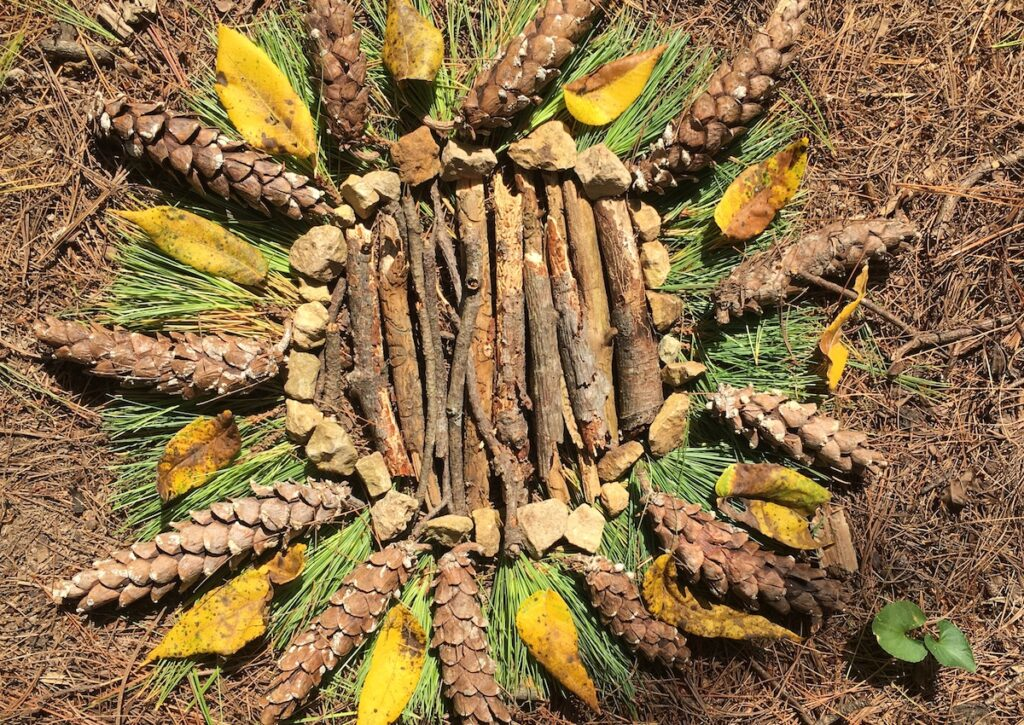
Nature-inspired art installation using sticks, stones, pine needles, cones, and leaves arranged in a circular mandala pattern on the forest floor
Contemporary Innovators Reshaping Landscape Art
Today’s landscape artists are pushing beyond traditional representations to create works that reflect our complex relationship with a changing natural world. Artists like Shara Hughes blend abstract and representational elements using intuitive color palettes that echo both Post-Impressionist traditions and contemporary environmental concerns. Rebecca Stenn brings choreographic energy to landscape painting, translating bodily motion into visual compositions that capture the dynamic rhythms of natural spaces.
These contemporary voices address not just nature’s beauty but also its vulnerability, creating artworks that serve as both celebration and call to action in an era of environmental uncertainty.
The Therapeutic Landscape: Art as Environmental Healing
The growing field of eco-art therapy recognizes that creative engagement with nature serves multiple therapeutic functions: promoting individual healing, fostering environmental awareness, and building community connections. Participants in nature-based art programs report enhanced creativity, improved emotional regulation, and deeper environmental consciousness.
This approach reflects a shift from viewing nature as subject matter to understanding it as an active collaborator in the therapeutic and creative process. The integration of sensory experiences, creative expression, and reflection creates opportunities for transformation that extend beyond the individual to encompass broader ecological understanding.
Conclusion: The Endless Source
Monet’s insight that “the richness I achieve comes from Nature” continues to resonate with artists working at every scale and in every medium. Whether capturing the play of light on water, arranging stones in temporary configurations, or designing spaces that invite natural elements indoors, artists continue to discover in nature an endless source of inspiration, healing, and meaning.
The evolution from traditional landscape painting to contemporary environmental art reflects not just changing aesthetic preferences but our deepening understanding of the essential connection between human creativity and natural systems. As we face unprecedented environmental challenges, nature-inspired art serves not only as celebration of beauty but as a powerful reminder of what we stand to lose—and what we might yet preserve through conscious engagement with the natural world that sustains us all.
In every brushstroke inspired by morning light, every sculpture shaped by wind and weather, and every installation that invites us to slow down and notice the intricate patterns of natural life, artists continue to demonstrate that nature remains, as Monet knew, the ultimate source of creative richness.
